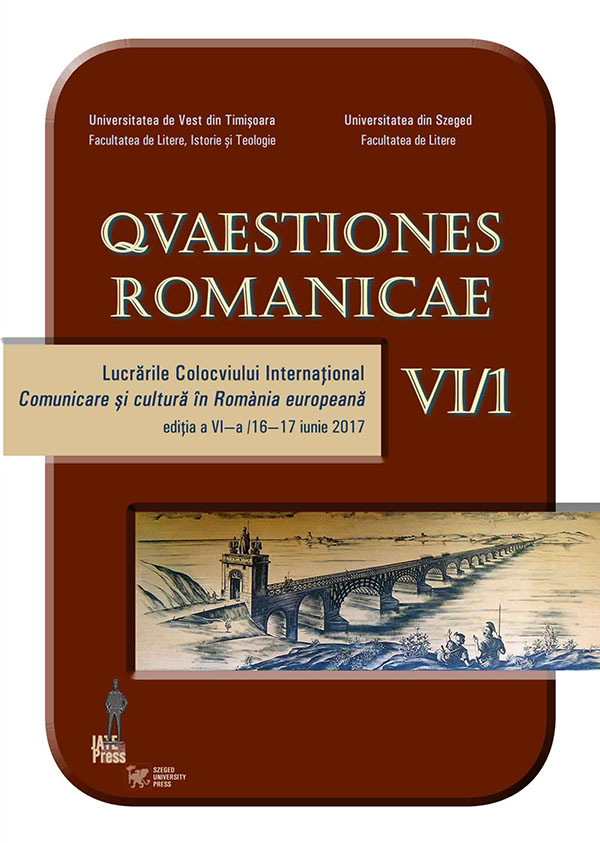Sublimul – prin metamorfoze, la canon, în teoriile Antichității greco-latine
Abstract: (The Sublime – through Metamorphoses to the Canon in the Theories of the Greek-Latin Antiquity) It turns out that the modern poetics or rhetoric, the science of language in general, either take from the Antiquity recipes, methods, rules, norms – which they apply to the contemporary statement, adapting them to its requirements and giving them a new appearance and sometimes a new name –, or they ‚rediscover’ them unintentionally and unconsciously, thus achieving a perpetual cyclic endeavour. Such is the antique canon of the three styles (grand, humble and intermediate, which can be applied both to poetry and prose), which has remained valid up to the modern era and it is still used as an aesthetic and literary instrument in the science of the written or spoken text, and in the imitative arts as well. We are proposing, in our study, to follow the evolution of this canon, placing the emphasis on the sublime style.
Keywords: style, sublimis, humilis, medius, stylistic features.
Rezumat: Se constată că poetica ori retorica modernă, ştiinţa limbii în general, fie preiau de la antici reţete, metode, reguli, norme – pe care le aplică enunţului contemporan, adaptîndu-le cerinţelor acestuia şi dîndule o nouă înfăţişare şi, uneori, un nou nume –, fie le „redescoperă” involuntar şi inconştient, realizînd astfel un perpetuu demers ciclic. Într-o asemenea situaţie se află şi canonul antic al celor trei stiluri (înalt, umil şi mediu, aplicabil deopotrivă textului poetic şi prozei), care a rămas operabil pînă în vremurile moderne şi este încă folosit ca instrument estetico-literar în ştiinţa textului scris sau rostit, ca şi în artele plastice. Ne propunem, în studiul nostru, să urmărim evoluţia acestui canon, accentul căzînd asupra stilului sublim.
Cuvinte-cheie: stil, sublimis, humilis, medius, caracteristici stilistice.
